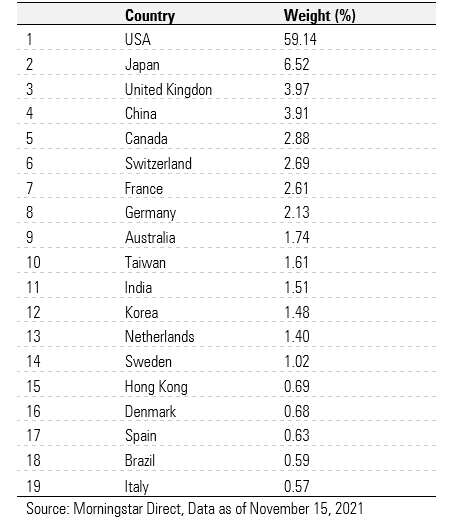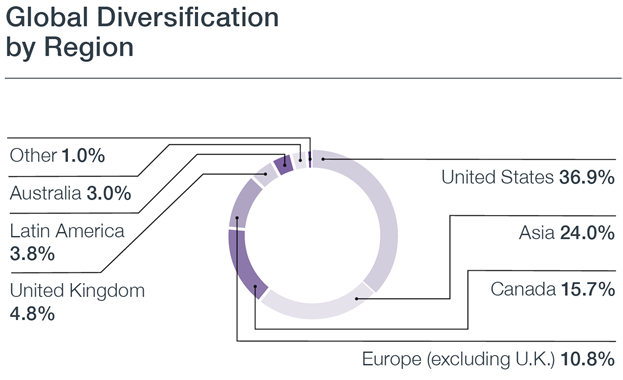
One thing that plagues investors across the world is the over-exposure to domestic equities, a term known as home-country bias. Regardless of the cause, investors should consider ensuring that their portfolios are not overly weighted toward domestic stocks. The reasons for this are outlined in a video I recorded last year. This begs the question – what should my weight be in domestic equities?
Like many aspects in investing, there’s not a one-size-fits-all answer. However, here are three reference points to consider in comparison to your own exposure to domestic equities:
Global Market Indices
Morningstar, alongside other index providers, generates global market indices that are largely used as benchmarks for professional fund managers. As global benchmarks, these indices are designed to indicate the performance of the broad stock market and sample companies from all geographic regions that meet a certain liquidity constraint. As an example, the Morningstar Global Target Market Exposure index has the following country allocations:

Like many indices, this global index is market cap weighted, and as such it might not be surprising that US companies constitute a large portion of the index. Notice though that the exposure to Canadian stocks is just shy of three percent. Given that professional managers use these global indices as benchmarks, it might be worthwhile taking note of their geographic allocations.
Sovereign Pension Plans
Canadians are lucky enough to have a mandated sovereign pension plan managed by the Canadian Pension Plan Investment Board. With assets nearing $500 billion, the plan is tasked with ensuring it meets its obligation to Canadian retirees for generations to come. The plan invests across multiple asset classes with the following geographic allocation:

Source: https://www.cppinvestments.com/the-fund/our-performance/financial-results/f2021-annual-results
Notice that despite being a plan for Canadians, domestic holdings make up only 15.7% of the overall geographic allocation. In a way, this acts as a bit of a hedge. If Canadians’ retirement goals are dependent on the Canadian economy, it would make little sense to invest their retirement savings into the same economy. If for whatever reason the Canadian economy crashes, it would be in Canadians’ best interest not to have the majority of their assets invested in Canada.
Fund Managers
The Canadian fund landscape houses roughly 60 categories, broadly defined by asset allocation, geographic exposure, and investment approach. There is a small subset of categories for target date funds, which do not have geographic exposure definitions. Like the approach for a pension plan, the idea with target date funds is that they reduce risk by decreasing allocation to equities the closer we get to the target date (the time when the investor withdraws asset for retirement). In the most conservative target date category (2025 Target Date Portfolio), Canadian domiciled fund managers hold on average 11.2% in Canadian equities at the end of October.
To read more about home country bias, check out “Home Country Bias: The Good, the Bad, and the Ugly.”
This article does not constitute financial advice. Investors are urged to conduct their own research before buying or selling securities.




















